As I say every year, the draft is about adding talent, but winning is about talent development. I know I can't grade a draft class on performance for at least a few years, which is a reason I audit old drafts. What I do here is assess three main things:
• How much overall talent did a team add, based on board position?
• How effectively did they address key personnel voids?
• How efficient were they in maneuvering on the draft board?
Remember: I have to use my player grades as the prism. I'm well aware all NFL teams see players differently -- I debate with those evaluators all year. Disagreements are just the reality of this process, and I'm sure they have some grades on me.
Grading scale: In my mind an A means it's exceptional; a B is pretty good; a C is average, with hits and questions marks; a D means below average with some big questions. An F ... well, keep reading.
ARI | ATL | BAL | BUF | CAR | CHI | CIN | CLE | DAL | DEN | DET | GB | HOU | IND | JAC | KC | LAC | LAR MIA | MIN | NE | NO | NYG | NYJ | OAK | PHI | PIT | SF | SEA | TB | TEN | WAS
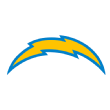
Los Angeles Chargers: A
Top needs: Wide receiver, outside linebacker, defensive back
The newest team to move to Los Angeles needed a fresh start, and this class will help. We speculated before the draft whether the Chargers would draft a future replacement for Philip Rivers, instead they seem intent to make him better than ever. Keenan Allen has played only nine games over the past two seasons, which is why I pegged receiver as the Chargers' top need. Los Angeles got my top-ranked receiver at No. 7 in Mike Williams, a potential perennial Pro Bowler who can be thrown to even when covered. He made Deshaun Watson better last season, snagging errant throws and taking them to the house. The Chargers just need to get Allen and Williams on the field at the same time. That's a strong, young core, along with former undrafted free agent Tyrell Williams and tight end Hunter Henry. Philip Rivers has to be thrilled, and fantasy experts agree.
After cutting D.J. Fluker, guard moved up to a need, and Los Angeles went with two interior linemen on Day 2. It got my Nos. 1- and 3-ranked guards in Forrest Lamp and Dan Feeney. Lamp, a four-year starter at left tackle for Western Kentucky, could end up as the Chargers' starting center when the 2017 season begins. Former Jim Thorpe Award winner Desmond King could end up at safety or slot corner -- he had 14 career interceptions. That was good value in the fifth. Isaac Rochell isn't much of a pass-rusher, but he can help in the running game.
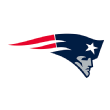
New England Patriots: A
Top needs: Defensive end, linebacker, offensive tackle
The reason the Patriots' grade is so high with no first- or second-round picks? You have to remember that Brandin Cooks and Kony Ealy are essentially those picks, and New England knows exactly what it's getting in both. Cooks is a devastating big-play threat who has caught 315 passes in three seasons in the league. Ealy will likely start at defensive end in New England's 3-4. The questions there are the contracts. Cooks could be looking at a mega-deal after 2018, and Ealy is a free agent after this season. New England also got Dwayne Allen, plus a sixth from the Colts for a fourth, and surrendered its fifth-round pick for Mike Gillislee. All should contribute to a team looking to defend a Super Bowl title.
Now, on to what New England got this weekend, including two guys who were higher on my board than where the Patriots picked, and at need positions. Derek Rivers is a workout freak and ferocious pass-rusher who had 41 career sacks at Youngstown State. He would have been a contributor if he had played at Ohio State. Antonio Garcia required giving up their fourth-round pick in a trade up 11 spots, but he's a natural left tackle who started 42 collegiate games. He was my fifth-ranked tackle. If he's the Patriots' swing tackle backing up both Nate Solder and Marcus Cannon, that's an improvement. Deatrich Wise Jr., a versatile edge defender, continues the Patriots' Arkansas pipeline.
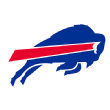
Buffalo Bills: A-
Top needs: Defensive back, tight end/wide receiver, offensive line
The Bills had the fewest picks headed into the draft (six, tied with Atlanta), but they were able to move down, and I like both the move and the talent added. They got a huge haul from Kansas City for dropping 17 spots in the first round, adding a third-round pick and first-round pick in 2018. The early run on quarterbacks should make Buffalo feel better about having Tyrod Taylor around for another season (at least). The Kansas City pick turned into Patrick Mahomes, a player I had rated lower than the guy the Bills got at No. 27 overall. I think the Bills got three players who could start this season. Tre'Davious White, a four-year starting cornerback at LSU, could replace Stephon Gilmore. Zay Jones, who had 158 catches last season, can step in for Robert Woods -- they're both willing blockers -- and probably outproduce him. (Are Bills fans that upset about the Woods departure?) I thought Jones was a first-round talent. In Dion Dawkins, Buffalo got my No. 2 guard, a dominant run blocker who will make the move from left tackle. He gets to the second level with ease, and it could be a great help to Taylor if the run-blocking improves. Dawkins could help the cause.
Nathan Peterman could be the pick of the draft in a few years, and that's another reason why this class is rated so high. I know there are questions about a guy with average arm strength going to a spot like Buffalo, where cold and wind comes into play. But arm strength can improve in the NFL. Just look at Tom Brady and Drew Brees. With Taylor taking a pay cut to stay, I wouldn't be surprised if Peterman is the starter in a year or two.
Buffalo did well with what it had. That's four potential starters if we're including next year's No. 1. It's refreshing to see Buffalo move back and add some capital, even in the midst of a potential change in the front office.
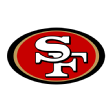
San Francisco 49ers: A-
Top needs: Quarterback, offensive line, defensive back
John Lynch went straight from the booth to a general manager role but didn't look like a rookie GM in his first draft. On the first night, he made two smart trades and added two prospects (Solomon Thomas and Reuben Foster) I ranked in my top eight overall. To move down one spot from No. 2 to No. 3 with the Bears, the Niners got pick Nos. 67 and 111 this year and a third-round pick in 2018. That's a heist. The added draft value allowed them easy passage to slide up for Foster. Even if you didn't love these players, you'd have to say bravo to the maneuvering.
Elsewhere, the 49ers were able to target clear needs at cornerback with Ahkello Witherspoon in Round 3, and at running back with Joe Williams in Round 4. George Kittle is the best fullback/tight end hybrid in the draft. D.J. Jones and Pita Taumoepenu are useful D-line depth pieces and Trent Taylor could help at receiver.
If there's a puzzler here, it's the use of a third-rounder on C.J. Beathard, a guy I had rated well behind a few other QBs available at the time. The divide on Beathard is whether you see physical tools that translate to a potential starter. I'm not quite in that camp.
Overall, the 49ers did well to not just settle for picking good players and make a play for adding a second elite player. Reuben Foster carries some risk, but at No. 31? Bring it on. This is a good start to the Lynch era.

Tampa Bay Buccaneers: A-
Top needs: Tight end, defensive back, wide receiver
O.J. Howard at 19 is in the running for best pick of the entire draft. I can't believe he made it there -- I thought he might go as high as No. 4. He wasn't a prolific pass-catcher at Alabama, including only 37 catches last season, but he has all the tools scouts look for in an NFL tight end. And he's already an above-average blocker. This is a value pick at Tampa's No. 1 position of need.
I liked Chris Godwin in the third round. His 4.42 40 at 6-foot-1, 209 at the combine turned some heads, and his tape is solid. The receiving corps of Mike Evans, DeSean Jackson and Godwin -- plus Howard and Cameron Brate -- has to be one of the most improved units in the league since the season ended. Justin Evans was picked about 50 spots too high based on my board, especially with Josh Jones and Obi Melifonwu still on the board. The junior college transfer is more of a center fielder. Kendell Beckwith, on the other hand, was picked 40 spots lower than where I had him. He's coming off a torn ACL suffered in late November, but he should be ready for training camp. Jeremy McNichols is my ninth-ranked rusher, and so getting him in the fifth round qualifies as a nice pick. He had 88 catches over the past two seasons.
I'm betting Jameis Winston is the person most thrilled with this Bucs draft.
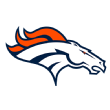
Denver Broncos: B+
Top needs: Offensive tackle, tight end, defensive line
The questionable: Denver doesn't have set starters at either tackle spot, and so targeting one in Round 1 was smart. But I had Cam Robinson and Ryan Ramczyk rated higher than Garett Bolles, and Bolles will turn 25 before the season starts. I'm not sold he'll stick on the left side, and the mauler is probably a better right tackle at this point. If he's the starter from day one on either side, I suspect the Broncos will be happy, but there is at least some risk. That keeps the Broncos out of the range of an "A."
The good: Virtually everything else. DeMarcus Walker is a perfect fit as an end in the Broncos' 3-4, and he could move inside in passing situations. He had 16.0 sacks last season. Carlos Henderson is the second-best kick returner in this class and a big-play threat (19 touchdowns last season). I thought Brendan Langley, a Georgia transfer who has played some receiver, could have gone at the end of the second round, and the Broncos got him in the third.
I was surprised Jake Butt lasted until the fifth round, but that torn ACL suffered in the Orange Bowl could delay his season. He was a potential top-40 pick before the injury. The 5-foot-7, 173-pound Isaiah McKenzie is a dynamic punt returner who could get a few plays per game on offense. Mr. Irrelevant Chad Kelly has too many red flags for my liking. Overall, Broncos fans should be pleased with the value on Days 2 and 3.
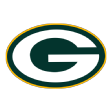
Green Bay Packers: B+
Top needs: Running back, outside linebacker, cornerback
After trading out of Round 1, Green Bay got an uber-talented, rangy (6-foot-3, 200) corner in Kevin King, a guy who could have been picked in the 20s. For a secondary that fell apart because of attrition last season, that's a pick at value and need. Josh Jones will help at safety, and I had him No. 38 on my board. Could he challenge Morgan Burnett at strong safety immediately? Montravius Adams could be a steal if Green Bay can get him to play to his talent every down. That's a nose tackle I thought might go higher because of the upside.
We knew the Packers would be in the market for a running back -- converted wide receiver Ty Montgomery is their No. 1 -- but they passed on Dalvin Cook, Joe Mixon and others and instead took Jamaal Williams in the fourth round. That's solid value for a guy who reminds me of Jordan Howard. Vince Biegel, who was named after legendary Packers coach Vince Lombardi, is the Badgers' best pass-rusher not named Watt. He had 21.5 sacks in his career. Malachi Dupre has some tools as a developmental prospect late on Day 3.
Overall, Green Bay hit the jackpot with King and got a pass-rusher named after the most famous Packer ever. There's little not to like.

Minnesota Vikings: B+
Top needs: Offensive tackle, defensive tackle, wide receiver
I think everyone who watched the Vikings last season knows their offensive line was a disaster. They addressed that need in free agency at a premium price with tackles Riley Reiff and Mike Remmers, and getting Pat Elflein, my No. 1 center, at pick No. 70 was solid. I wonder if he could play guard next to Joe Berger, too. Dalvin Cook dropped a little throughout the pre-draft process, but he's a home run threat and will help out in the passing game, too. He had 40 total touchdowns over the past two seasons. Those are big shoes to fill to replace future Hall of Famer Adrian Peterson, and the Vikings now have the trio of Cook, Latavius Murray and Jerick McKinnon fill that hole. The only quibble with these is that Minnesota traded up for both, though it did pick up another fourth-rounder with the Chiefs.
Jaleel Johnson, an interior pass-rusher, and inside linebacker Ben Gedeon were both value picks in the fourth round. I liked 6-foot-6 tight end Bucky Hodges in the sixth round as a pass-catcher with upside. Stacy Coley and Rodney Adams both ran 4.45 40s at the combine.
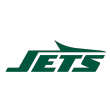
New York Jets: B+
Top needs: Quarterback, offensive tackle, tight end
New York didn't address its top two needs -- QB and OT -- with this class, but here's why I'm not faulting the strategy: The Jets clearly went best-player-available throughout the class, and they didn't reach. That's hugely important for a team with one of the worst all-around rosters in the league. So while I don't think their quarterback of the future is on their roster, I can't knock not seeing the value in taking a developmental signal-caller when Christian Hackenberg is already that guy. And in one of the worst offensive line classes in recent history, they didn't try to get a raw prospect in the middle rounds. They stuck to their board, and I can respect that.
Jamal Adams is simply a fantastic player and value at No. 6 overall, and Marcus Maye at the top of the second round is right where I thought he'd go. This puts the roster spots of Calvin Pryor and Marcus Gilchrist in tenuous positions, but New York is at least willing to see its flaws and try to correct them. Ardarius Stewart, Chad Hansen and Jordan Leggett all should help the passing game -- and whoever's throwing them the ball. Leggett, in particular, could be a starter when the season begins.
Credit general manager Mike Maccagnan, too, for trading down and acquiring extra picks four times, and picking up an extra fifth-round pick in 2018. He knows the roster's deficient, and this isn't a one-year fix.

Pittsburgh Steelers: B+
Top needs: Linebacker, wide receiver, cornerback
Credit to the Steelers for taking a 3-4 pass-rusher with their first pick, knowing that James Harrison (soon to be 39) won't be around forever and that former first-round pick Bud Dupree hasn't exactly lit the league on fire (8.5 sacks in two seasons). I had Tyus Bowser rated higher than T.J. Watt, but it was close. I thought JuJu Smith-Schuster might be an early Day 2 pick, but he fell to the end of the second round. He had an inconsistent season but has No. 1 potential. I love his competitiveness and willingness to block. If Martavis Bryant plays the way he did in 2015 and can stay on the field, Big Ben could have some of the best weapons in the league.
Cameron Sutton went right about where I thought, and he could return punts. James Conner is a great story and pretty good player, but there were better backs available, including Samaje Perine, who's a better bruising-type runner. The Steelers will hope he slims down a bit like Le'Veon Bell and stars. If Joshua Dobbs ends up being a competent backup to Ben Roethlisberger, that's probably a win for Pittsburgh. The cost was low, and the upside is high, but he's nowhere near ready to play right away. I thought he could have gone as high as the second round.
All in all, needs filled.

Philadelphia Eagles: B+
Top needs: Cornerback, running back, defensive end
Defensive tackle Fletcher Cox led the Eagles in sacks last season with 6.5, and there was a clear directive to get an edge rusher for defensive coordinator Jim Schwartz in the first two days of the draft. Derek Barnett fits that bill as the first-rounder Philly got in the Sam Bradford trade with Minnesota. Barnett, who had 33.0 career sacks at Tennessee, will join the rotation with Brandon Graham, Vinny Curry and free-agent signing Chris Long.
Philadelphia had issues in the secondary last season, too, and one of the best things for a porous pass defense is a stellar pass rush. The Eagles took a step toward that on Day 1, then boosted the back end on Day 2. Sidney Jones could be a steal if he recovers fully from the torn Achilles he suffered at his pro day in March. Though he's optimistic about returning in 2017, he might be better served by a redshirt year. If healthy, he's a top-15 talent with good ball skills and the ability to handle big wideouts. Rasul Douglas was a ball hawk in 2016 with eight interceptions, but he doesn't have high-end speed (4.59 40).
Mack Hollins is a special-teams demon and former walk-on with some big-play ability. Donnel Pumphrey set the FBS career rushing record with 6,405 yards and is probably a part-time back. Elijah Qualls has a load of talent and ability but inconsistent tape.
Philly needed to shore up its defense and it did that pretty well. It's not a home run class, but the Eagles got better.
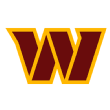
Washington Redskins: B+
Top needs: Defensive back, running back, defensive line
Washington needed to shore up its run defense in this draft, and the two Alabama players will certainly help there. Jonathan Allen, the No. 2 player on my board, fell all the way to No. 17, a complete heist by the Redskins. He was one of the top two or three defenders in the country the past two seasons, a versatile player who will likely play end in the Redskins' 3-4. He will be a disruptor. Ryan Anderson isn't one of the top pass-rushing 3-4 outside linebackers, but he's one of the best against the run. He doesn't have elite measureables (6-foot-2, 253, 4.78 40), but he's a solid all-around player.
Snagging Fabian Moreau, who was No. 65 on my board, is good value. Moreau slid because of a torn pectoral muscle suffered at his pro day, but his combine workout numbers (4.35 40, 38-inch vertical) were among the best of any player. He needs to improve his ball skills. Samaje Perine was one of my best available prospects headed into Day 3, and he'll be a steamroller for the Redskins at 5-11, 233. He set Oklahoma's all-time rushing record in only three seasons with 4,122 yards. The 6-5 Jeremy Sprinkle is my 12th-ranked tight end.
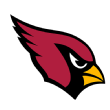
Arizona Cardinals: B
Top needs: Quarterback, inside linebacker, cornerback
With the top three QBs off the board at No. 13, Arizona stuck with a position of need and got versatile linebacker Haason Reddick, a former walk-on and superb athlete who absolutely nailed the pre-draft process. He had a great week at the Senior Bowl, and was one of the MVPs of the combine, running a 4.52 40 with a 36½-inch vertical and 11-foot-1 broad jump. He's probably an inside player in the Cardinals' 3-4, but he can get after quarterbacks from outside linebacker, too.
Arizona gave up three picks to trade up for Budda Baker, but I love the player. He might have been a top-15 pick if he had been bigger -- he's only 5-10, 195. The comparison I made before the draft? Tyrann Mathieu. Now Arizona has both of them, and after losing Tony Jefferson and D.J. Swearinger, a plug-and-play safety was needed. Baker has cornerback-type cover skills, and he's not afraid to tackle. He could be Arizona's slot corner. I'm going to make an early prediction and say he ends up on my Rookie Big Board next season.
Trading up for Chad Williams was a reach -- I pegged him as a late-Day 3 guy. Amara Darboh and Mack Hollins were among the wideouts higher on my board, and there are some off-field concerns, as Williams was arrested last May for possession of marijuana and possession of a firearm with drugs. Dorian Johnson was my No. 5 guard and a three-year starter on the right side. T.J. Logan was my top-ranked kick returner.
The lingering question over this class is the Cardinals' not getting a quarterback and having no potential long-term starter who could replace 37-year-old Carson Palmer, but other teams traded up in front of Arizona, so I can't fault them for holding steady. I would've liked a potential replacement for Calais Campbell, as well.

Baltimore Ravens: B
Top needs: Outside linebacker, offensive line, cornerback
This was a defense-heavy class for the Ravens, and I liked virtually every pick -- I think the question is whether Joe Flacco loves it. Marlon Humphrey is my second-ranked corner, a super-athlete and physical defender who will compete with Brandon Carr and Jimmy Smith for a starting spot. I remember watching his father, Bobby Humphrey, who was star running back at Alabama and played four seasons in the NFL.
Tyus Bowser and Tim Williams are perfect fits in the Ravens' 3-4 and potential Terrell Suggs replacements. Williams was the No. 1 prospect on my Big Board headed into the 2016 season, but he's not a complete player, and off-field issues are why he was still around in Round 3. Williams does one thing really well -- get up the field quickly in pursuit of quarterbacks -- but that's a skill teams crave. Chris Wormley dropped a little bit, but he could ultimately replace the traded Timmy Jernigan. He's an outstanding defensive tackle in an admittedly lean class. On Day 3, Nico Siragusa and Jermaine Eluemunor are guards who could replace Alex Lewis on the left side.
That's all three of their needs checked off in a solid all-around draft. The big question: O.J. Howard was there for the taking at No. 16. Does an improved defense make that a moot point? We'll see.

Cleveland Browns: B
Top needs: Quarterback, running back, cornerback
The Browns had a draft that could split a fan base. How? Well, on one hand I'm not sure any team added more overall talent, plus yet another future first-round pick in the Deshaun Watson deal, which sets Cleveland up for a monster 2018 draft. On the other hand, the problem that has dragged this franchise down for years -- no franchise quarterback -- is still clearly not solved.
First, the good stuff: Cleveland didn't overthink the No. 1 pick. After plenty of rumors the Browns could take Mitchell Trubisky there, they sat tight and simply took the best player. A motivated Myles Garrett could be a superstar. And Gregg Williams should have a great plan for Jabrill Peppers. David Njoku could become the best big receiving weapon out of this draft if he develops. That's a huge first round.
The issue, of course, is Watson now joins Carson Wentz as a coulda-been QB for the Browns, and his success or failure will be closely watched. I'm also not too high on DeShone Kizer, though the physical tools are obvious. Cleveland has to believe either it has a QB trade, or Cody Kessler can get it done. Feeling good about that? Elsewhere, both Larry Ogunjobi and Roderick Johnson have a lot of upside. Johnson in particular has great attributes and inconsistent tape. Caleb Brantley is a major character risk given recent legal issues, but he's obviously far more talented than the draft slot.
Overall, a frustrating draft for some, a big win for talent added.
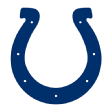
Indianapolis Colts: B
Top needs: Offensive line, inside linebacker, defensive line
New general manager Chris Ballard inherited a porous defense, and he went that direction with his first three picks. Malik Hooker could have gone as high as No. 7, but the one-year wonder dropped to 15. He's the best center fielder in his class, and some have compared him to Ed Reed, but Hooker needs to improve as a tackler. He's a ball hawk who is recovering from having surgery in January to repair a torn labrum in his left hip and repair sports hernias.
Quincy Wilson went higher than I thought, and he gets a little grabby in coverage, but he has good ball skills and instincts. Top-end speed is the issue -- he ran a 4.54 40 at the combine. Jourdan Lewis Chidobe Awuzie, Fabian Moreau, Ahkello Witherspoon were all still on the board when Wilson went. Tarell Basham is a premium pass-rusher I thought could go in the second round. He had 29.5 career sacks.
Zach Banner is massive (6-8, 353) and will likely move inside to guard. Marlon Mack should see time next to Frank Gore. Grover Stewart is a developmental plugger (6-4, 334) who can take on double-teams at nose tackle. Anthony Walker Jr. had 20.5 tackles for loss for Northwestern in 2015 and was the Wildcats' best defender.
Ballard did a nice job addressing the defense, but there's still a long ways to go. I also wouldn't have minded a tight end to replace the departed Dwayne Allen.
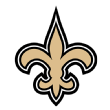
New Orleans Saints: B
Top needs: Cornerback, outside linebacker, wide receiver
The Saints had an extra first-round pick because they traded Brandin Cooks to the Patriots for the No. 32 pick overall, noted at the top because Cooks has 315 catches in three seasons. With two first-rounders, you really have to be looking for a couple of players with the ability to make an impact relatively soon (especially for a team coming off a third straight 7-9 season), and I think the Saints got that done. Marshon Lattimore comes with what I'd call an orange flag -- not quite red -- because of lingering hamstring issues, but if he's healthy, he's the top cornerback in the draft. This is an exceptional athlete (4.38 40) who can look effortless. Put the Malcolm Butler trade talk to bed.
Ryan Ramczyk is a reasonable selection at No. 32 overall, given that left tackle Terron Armstead has dealt with injuries and right tackle Zach Strief is almost 34. Ramczyk has the ability to play right away (better if it's on the right side), but he also carries some risk, as his hip has been a problem. The secondary was a priority, and Marcus Williams isn't a far cry from what Malik Hooker brings -- and much further down the board.
A big question mark here was the value given up to draft Alvin Kamara. Even if you question any possibilities beyond 2017 for Mark Ingram or Adrian Peterson, trading a second-rounder to move up and take my No. 88 overall player is iffy. Give them this: The backfield is officially loaded.
I like Alex Anzalone, and if he's healthy, he can help, but the injury history is significant with three major injuries at Florida. A potential steal here is Trey Hendrickson, who was a monster in Conference USA.
Overall, you have to like the fact that there are two potential immediate starters (if needed, in Ramczyk's case) out of Round 1 and an emphasis on defense. But we can't forget this draft involves the departure of a Pro Bowl player in Cooks and now a second-round pick the Saints don't have in 2018.
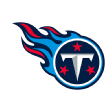
Tennessee Titans: B
Top needs: Cornerback, wide receiver, inside linebacker
I can quibble with the value of taking Corey Davis at No. 5 and Adoree' Jackson at No. 18 -- and I did -- but I do like both guys, even if I had higher-rated players on my board. Davis is still a bit of unknown because he didn't work out before the draft. On tape, he dominated at Western Michigan, but that's obviously a different caliber of opponent than what he will see each week in the AFC South.
Jackson is undersized (5-10, 186), raw and still improving but has value as a punt returner. He could also play a few snaps per game at receiver, too, and I'm sure Marcus Mariota would welcome that. The Titans deserve some credit for sticking to their board and going with clear needs, but with no second-round pick because of last year's trade up for Jack Conklin -- a stellar move, by the way -- there is some risk.
Taywan Taylor led all FBS players with 3,197 receiving yards and 34 touchdown catches over the past two seasons, and Jonnu Smith has some upside as a pass-catcher. Tennessee clearly put a priority on getting Mariota some weapons. It didn't have a field-stretcher, but Taylor can help there, and Delanie Walker could be cut for little dead money after the season. Jayon Brown, who replaced Myles Jack in the Bruins' defense, is an inside defender in a 3-4, and Josh Carraway had 17.0 sacks over the past two seasons.
Overall, a lot of talent here and a nice job in general manager Jon Robinson's second draft.

Atlanta Falcons: B-
Top needs: Defensive back, defensive end, guard
Atlanta paid a premium in moving up five spots -- a third- and seventh-round pick -- to get a pass-rusher opposite Vic Beasley Jr., but I can't fault the Falcons for identifying and addressing their biggest need. Takkarist McKinley and Beasley are almost identical in size, and both are speedy, explosive guys with high upside. Beasley had 15.5 sacks last season, but no other Falcon had more than 4.5. McKinley will help with that, though his shoulder issues gave at least a couple of teams pause.
The Falcons traded out of the second round, picking up two fifth-round picks to drop 12 spots into the third round. The pick was interesting, as Duke Riley replaced Deion Jones as LSU's weakside linebacker last season, and now both could be playing beside each other. Jones, of course, was one of the best rookies in the league in 2016 after moving to middle linebacker, and Atlanta has to hope Riley can replicate some of that success. Riley's 4.58 40 at the combine was the fastest among linebackers.
Diminutive cornerback Damontae Kazee (5-10, 184) is a ball hawk -- 15 interceptions over the past two seasons -- and one of my favorite slot corners in the class. I thought tight end Eric Saubert could go early on Day 3, and that's good value in the fifth round.

Cincinnati Bengals: B-
Top needs: Wide receiver, defensive line, offensive line
Risk seemed to define the early portion of this class. It's not at all a surprise that the Bengals -- who have drafted exceptionally well in recent years -- would want to grab another wide receiver for Andy Dalton. After losing both Mohamed Sanu and Marvin Jones in free agency last year, they drafted Tyler Boyd in Round 2, but the distance between A.J. Green and the rest of the receivers here is still notable. I was just a bit surprised they went with John Ross at No. 9 overall. Maybe they wanted Corey Davis (No. 5 overall) or Mike Williams (No. 7) and just decided they better get Ross. Still, Ross has a smaller frame, is coming off shoulder surgery and has missed a chunk of time because of an ACL tear. That's a lot of risk for a top-10 pick.
Then there is Joe Mixon. The guy is a major talent, but again, to take him in Round 2 is to say you're quite comfortable with his decision-making -- on and off the field -- going forward. Two picks, two talented players, but plenty of risk.
After that, the Bengals added some interesting potential. Jordan Willis had 26.0 sacks and 40.5 tackles for loss, and the workout numbers to match those totals, so to get him at No. 73 overall looks like a great value. Carl Lawson is also a really talented player but brings an injury history of his own. The Ryan Glasgow selection goes along pretty well with my ranks; my No. 150 overall player taken at No. 138. He has a chance to be a useful contributor along the D-line. Another interesting selection was Jordan Hall, as the Bengals have a need at inside linebacker. Josh Malone offers length and depth at wide receiver.
Ultimately, the talent here could win out over the risk, but this draft hinges on whether Ross stays healthy and Mixon lives up to his promise to stay out of the kind of situations that made him such a controversial selection.
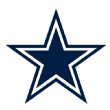
Dallas Cowboys: B-
Top needs: Defensive end, defensive back, tight end/wide receiver
Brandon Carr, Morris Claiborne and J.J. Wilcox all left in free agency, and the Cowboys just needed bodies to fill those snaps. I thought they missed an opportunity at pick No. 28 to get a first-round talent -- Kevin King and Budda Baker were still on the board -- and instead chose Taco Charlton, a 6-foot-6, 277-pound defensive end who is a much better run defender than pass-rusher. Yes, Dallas needed an end after DeMarcus Lawrence underwhelmed last season and Randy Gregory was suspended for at least the 2017 season, but a premier pass-rusher made more sense. I don't think that's Charlton, who is No. 46 on my board.
Dallas' Day 2 was much better. Chidobe Awuzie, the best tackling corner in this draft, and Jourdan Lewis, likely a slot corner, will play early and often. Lewis is facing misdemeanor domestic violence charges, however. Ryan Switzer wasn't in my top 300, but I can see why teams like him. At 5-8, 181, he's tiny, but he's a great punt returner. I do wonder how Dallas will get both him and Cole Beasley on the field together. Noah Brown was much higher on my board (168) than where he went (239).
Without many picks, the Cowboys got some value after Round 1, but the Charlton pick is a bit of a head-scratcher. Seven of nine picks on defense show that Dallas knows it has to improve there to be a true Super Bowl contender.
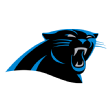
Carolina Panthers: C+
Top needs: Running back, offensive tackle, defensive end
My love for Christian McCaffrey is well known, and he will be an X factor for Cam Newton & Co. I've said all along that I don't like taking running backs this high, but he's not just a running back, which is why he's so valuable. He's a receiver -- and great route runner -- and a returner, too. I have no issue with this pick. But where does Curtis Samuel fit in this Carolina offense?
That's more curious after McCaffrey because they're similar. Samuel split time at running back and receiver last season -- he had 74 catches and 97 rushes. Could he be a slot-only guy in Carolina? He's explosive (4.31 40). It's almost like the Panthers drafted McCaffrey to help fundamentally change the offense, then drafted an insurance policy. And they did it with holes along the offensive and defensive lines and one potential need we're not talking about enough.
Taylor Moton is probably a guard in Carolina. He has nice feet in pass protection, and I could see him being a long-term starter. I thought Daeshon Hall, who played on the other side of top pick Myles Garrett, would be a fourth- or fifth-round pick. The Panthers took him at No. 77. Yes, defensive end was a need, especially after losing dealing Kony Ealy, but that's a reach with better players on the board, including Tarell Basham and Derek Rivers. Corn Elder is a slight corner (5-10, 183) who didn't run well at the combine (4.56 40).
As for the quiet need, I think it's fair to point to some concern surrounding Luke Kuechly, and I would have expected Carolina to look at some depth at linebacker. You can love McCaffrey and still have questions about this draft. But at least Cam should be happy.
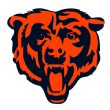
Chicago Bears: C+
Top needs: Defensive back, defensive line, wide receiver
Chicago's class is all about quarterback Mitchell Trubisky. The question is whether the current coaching staff will get to experience it. The Bears gave up a decent amount to move up just one slot in the draft to assure they'd get Trubisky, and passed on a couple of really good defensive players in Jamal Adams and Solomon Thomas. I said on Thursday night that I get why they targeted Trubisky, but I don't understand giving up what it took to move up one spot. Chicago gave up pick Nos. 3, 67 and 111 this year and a third-round pick in 2018 to San Francisco. That's just a huge haul for the 49ers, who you'll find on the opposite end of these grades. So now you have a case in which Mike Glennon appears to be getting a one-year audition as starter, and the Bears will bring along Trubisky slowly, but there are bigger needs elsewhere on the roster. And with only five picks total, it was tough to fill those.
In the rest of the class, Chicago added Division II tight end Adam Shaheen, one of my favorite players in the class. At 6-foot-6, 278, Shaheen is a mammoth target who dominated the GLIAC but will have a learning curve. Converted corner Eddie Jackson should compete with Adrian Amos and Quintin Demps at safety, and I like Tarik Cohen and Jordan Morgan as developmental guys with high ceilings. But, again, it's tough to have a higher grade with only five picks.
The Bears paid a lot for a bridge QB in free agency, and now they've paid up to get the QB on the other side of that bridge. John Fox has a major challenge ahead of him, because he probably won't get much from this class in the short term.
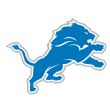
Detroit Lions: C+
Top needs: Running back, defensive end, cornerback
Detroit got some good players, but I'd contend the Lions didn't address their biggest needs in this draft. Ezekiel Ansah is the Lions' only pass-rusher, and they didn't get him any help. I think it's fair to assume Bob Quinn -- who has done an excellent job thus far -- didn't see Charles Harris or Takk McKinley as great options in the system, so Detroit ended up with Jarrad Davis. That's not too bad, as he should jump into a starting role immediately and is a great kid.
And maybe the Lions like Ameer Abdullah more than most and think he'll return better than ever, but I think given the health problems faced by him and Theo Riddick, they could have used another back. I like the addition of a cornerback, but Teez Tabor is a reach for me at No. 53 (No. 100 on my board). He needs to play faster than he ran after poor showings at the combine and his pro day. The Lions are betting on the tape over the workout.
The Lions did add some help at wide receiver, but there were several better receivers available when Detroit took Kenny Golladay on Day 2. Jalen Reeves-Maybin, a fourth-round pick they added when the Patriots traded up, could see time at outside linebacker. Michael Roberts is more of a pass-catcher than blocker but provides insurance (Eric Ebron is in the final year of his deal). Getting Brad Kaaya, my seventh-ranked quarterback, at the end of the sixth round is good value. He could be Matthew Stafford's long-term backup. Detroit could end up hitting on Davis and Tabor, But there just isn't enough here to warrant a higher grade given the lack of a pass-rush addition outside a late bet on Jeremiah Ledbetter.

Houston Texans: C+
Top needs: Quarterback, offensive tackle, wide receiver
The Texans identified a quarterback and went up and got him, giving up next year's first-round pick to move up 13 spots. Deshaun Watson is my third-ranked quarterback, which sounds good, but for me the tape shows more of a second-round talent. I know there is some desperation involved for a franchise that has seen the likes of Brian Hoyer, Ryan Mallett, T.J. Yates, Brandon Weeden and Tom Savage start games in the Bill O'Brien era, but that's a fortune to give up to draft a guy who has accuracy issues and threw 30 interceptions over the past two seasons, the most in FBS. Is he better than Tom Savage from Day 1? We'll see. Watson could start in 2017, sure. I think he needs more time, but that just doesn't happen in the NFL anymore.
Houston thinks it has a Super Bowl-caliber defense, and the offense is what's holding it back. If Watson can become a more consistent passer under O'Brien, this pick could look much better. At this point, though, it's just too much draft capital to surrender.
I did like Zach Cunningham and D'Onta Foreman on Day 2. Brian Cushing could be a cap casualty after 2017, and Cunningham is a natural replacement -- he's a prospect with a ton of experience playing a position where the transition shouldn't be too difficult. Foreman is a bruising back with some speed who will help on the goal line. Lamar Miller had only five touchdowns last season. Carlos Watkins is an explosive, talented interior pass-rusher with motor questions who was much higher on my board.
Ultimately, this draft will come down to Watson. If he's ready to be the starter for a playoff-caliber team in 2018, the fact that Houston doesn't have a first-round pick won't sting quite as much.

Jacksonville Jaguars: C+
Top needs: Tight end, offensive line, defensive tackle
I understand why Tom Coughlin and the Jags went with Leonard Fournette this high -- Coughlin sees him as his new Fred Taylor, a workhorse back who can make the quarterback better -- but I question the need. Consider the recent history: Chris Ivory is signed through 2020 (though he could be a cap casualty), and T.J. Yeldon was taken at the top of the second round just two years ago. Before that, they paid for Toby Gerhart.
Yes, that was before Coughlin's time in the organization, but between Ivory and Yeldon that's a hefty free-agent deal and high draft pick now minimized with the addition of Fournette. They could have had their pick from the some of the best defensive linemen on the board, as well as tight end O.J. Howard to give Blake Bortles a useful weapon. Instead they went with a running back who will only be as good as his offensive line -- and that's the problem. Fournette isn't a guy you want dancing in the backfield to create big plays. Will the blocking be enough? Adding Cam Robinson in the second round helps, but how good will Fournette be with an O-line that isn't on the same level as the Cowboys' was when they took Ezekiel Elliott at No. 4?
Elsewhere, Dawuane Smoot is a fascinating pass-rushing talent if he's right, but his production dropped off last season. He looked like a possible first-round pick in 2015, when he had 8.0 sacks. Dede Westbrook in the top of the fourth round was a reach, and the red flags here are significant. I thought he would drop closer to the sixth round. At that point, if you decide to cut a player, it's not that unusual. Blair Brown is an undersized inside linebacker (5-foot-11, 238), and Jalen Myrick is an undersized corner (5-10, 200) with electric 4.28 speed.
Overall, there's no question Fournette is special, I'm just not a fan of taking running backs early when other needs can be addressed.
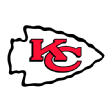
Kansas City Chiefs: C+
Top needs: Running back, inside linebacker, quarterback
As I said on Thursday night, this class will hinge on Patrick Mahomes because Kansas City bet big that he's the successor to Alex Smith. Giving up a third-round pick and next year's first to move up 17 spots was a ton for a team with immediate needs elsewhere and some defenders getting up there in age. Mahomes has a high ceiling, but he's going to have to learn how NFL offenses are run, and the Chiefs are going to have to rebuild his mechanics from the ground up. Andy Reid and John Dorsey know what they're getting (and know what they're doing) and see some Brett Favre in Mahomes. And they have a capable quarterback in Alex Smith signed until 2019. This is a pick -- and grade -- that could look like great or silly in five or six years. The good news for the Chiefs is they hope the first-round pick they're giving up in 2018 is in the 28-32 range.
Tanoh Kpassagnon, a gigantic edge defender (6-7, 289), is an intriguing, developmental prospect with upside, but there were better defenders available at that point in the second round. I thought he was more of a fourth-round pick. Kareem Hunt should help immediately alongside Spencer Ware and Charcandrick West. This is a kid who ran for more than 100 yards 28 times in his Toledo career. Needing to add some pass-catchers for Smith, all Kansas City came away with was Jehu Chesson, who underwhelmed in 2016 and was taken about 40 picks too high.
It really all comes down to Mahomes. You'd prefer not to give up so much draft value for a quarterback who shouldn't be in the immediate plans. In this case, the Chiefs felt they had no choice.
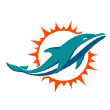
Miami Dolphins: C+
Top needs: Guard, defensive back, linebacker
Charles Harris dropping a few spots and falling into the Dolphins' lap helps them a bit, but I thought he was better suited to go to a 3-4 team. He might be a situational pass-rusher early in his career as he bulks up from his 6-foot-3, 253-pound frame. He needs to improve playing against the run, and that should come in time. Miami filled a big need with tackling machine Raekwon McMillan. I was surprised he went off the board before Zach Cunningham, however.
Cordrea Tankersley is a big corner (6-1, 199) who had nine career interceptions. The Dolphins traded up for Isaac Asiata, and I gave him an undrafted grade. If they wanted a guard who could play immediately, they could have taken Forrest Lamp in Round 1. Asiata isn't that guy. Davon Godchaux, who has some off-field concerns, and Vincent Taylor will provide depth along the interior of the defensive line.

New York Giants: C+
Top needs: Offensive tackle, linebacker, tight end
How bad were the Giants' tight ends last season? They averaged 7.7 yards per reception in 2016, worst in the NFL and almost a full yard worse than the next-lowest tight end group. Now, I don't know if Evan Engram will be called a tight end, but he'll absolutely help out in the passing game. His 4.42 40 at 6-foot-3, 234 at the combine had some teams moving him to the top of their receiver boards. Regardless, this is a big addition for Eli Manning, who targeted Odell Beckham Jr. a staggering 169 times last season. The New York offense needed another dynamic element, and Engram will provide that. Think about a quartet of Beckham, Brandon Marshall, Sterling Shepard and Engram. Yikes. Just don't ask Engram to block.
Taking Davis Webb in the third round raised eyebrows, but that is about where I thought he'd go. I never bought the talk of him being a potential first-rounder. I had Nathan Peterman, Joshua Dobbs and Brad Kaaya all rated higher. Dalvin Tomlinson is probably Johnathan Hankins' replacement, but I had Chris Wormley, Carlos Watkins and Jaleel Johnson, among others, higher on my board. Tomlinson is more than a clogger in space; he'll get in the backfield. I like Wayne Gallman in the fourth round to complement Paul Perkins. He's not very fast (4.60 40), but he runs hard and has good body lean. Adam Bisnowaty is my eighth-ranked tackle, so there's some value here in the sixth round.
The Giants added some useful pieces, though it'll be interesting to see whether Engram is a weapon in this offense, or more of a decoy. And offensive tackle is still a huge concern.

Seattle Seahawks: C+
Top needs: Offensive tackle, cornerback, defensive tackle
Life comes at you fast. A year ago at this time, the Seahawks had a secondary to envy and a great D-line, with arguably the best safety (Earl Thomas) and cornerback (Richard Sherman) in the league and name defenders up front. Those secondary players guys are still great, but Thomas is coming off a serious injury, and Sherman trade talk has dominated the spring. Up front, Michael Bennett and Cliff Avril? They're both 31. So the defensive backfield was clearly a priority, as the Seahawks nabbed a trio of safeties (Delano Hill, Tedric Thompson, Mike Tyson), as well as a cornerback (Shaquill Griffin). It's insurance everywhere for Thomas, Sherman and Kam Chancellor.
And up front, the Seahawks got a great value in Malik McDowell at 35 even after trading back a couple of times, as well as Nazir Jones, an interesting D-line prospect with a great story. I can quibble with value at a couple of spots here, but if they get the best of McDowell, that's a potentially massive steal.
Elsewhere, they hit a need for another wide receiver with Amara Darboh, and he was a good value -- they got the No. 90 player on my board at No. 106. And then there's that pesky O-line. It's been a mess, and Seattle added help with Ethan Pocic, who could play either center or guard.
Overall, Seattle did pretty well. Value was up and down, but they hit needs and are trying to stay ahead of attrition on defense.
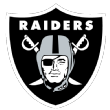
Oakland Raiders: C
Top needs: Cornerback, defensive line, running back
This is obviously a really difficult class to be assessing, given all that was swirling around Gareon Conley going into the draft, and without much time to gather information. I really just need to remove him from the equation here. On ability, he's a top-15 player, and the Raiders obviously feel comfortable with what they know of his off-field situation. But that situation really transcends a discussion of player value. I do think the Raiders could have taken a few other players in that spot and felt good about it.
After that, this draft stacks up as just OK for me in terms of overall value. Obi Melifonwu is arguably one of the top handful of athletes in the entire draft, but the tape doesn't quite live up to the combine marks. That said, he has a lot of experience and hits a position of need in the secondary. Eddie Vanderdoes in Round 3 is kind of a puzzler. The pedigree is there going back to high school, but he simply didn't perform like a third-rounder, and so you have the Raiders taking my No. 159-ranked player at No. 88 overall. He has ability, I just think he would've been there later.
David Sharpe provides depth along the offensive line, but I had Marquel Lee as a bit of a reach (though he could be good on special teams early), and Elijah Hood provides some short-yardage insurance if the Marshawn Lynch comeback tour isn't all it's cracked up to be. Shalom Luani has a chance to stick. The Conley situation clouds this, and I would have liked for them to get an inside linebacker.

Los Angeles Rams: C-
Top needs: Wide receiver, offensive line, defensive back
It would be a lot easier to stamp this draft grade "INCOMPLETE" and move on, because so much of it is wrapped up in Jared Goff. He is the reason they didn't have a first-round pick in 2017, and I certainly don't think it's fair to close the book on him. He had no chance last year with a lack of blocking (run or pass) and stone-handed pass-catching. If Sean McVay can unlock Goff's talent, then last year's grade and this year's grade look a lot better. In the meantime ...
Aside from the Goff issue, I just consistently saw the Rams' selections as a little bit rich. I like the plan -- go get pass-catchers for Goff -- but the value just suffered a little. I had Everett at No. 111 on my board, and he went at 44. I really like Cooper Kupp but would have gone with Chris Godwin or Josh Malone before him. Josh Reynolds can make great plays on the ball even while covered, but it was another case in which the Rams had him a bit higher than I did. John Johnson has some solid tape, but he didn't test well, and size is a question mark. I had him down as a likelier Day 3 pick.
Overall, I think the Rams were smart to go after weapons for Goff (and McVay), I just questioned value in spots. Ironically, the most important aspect to both this draft and last year's won't be Goff or these wide receivers, it'll be if the Rams can block well enough to unleash any of them.
